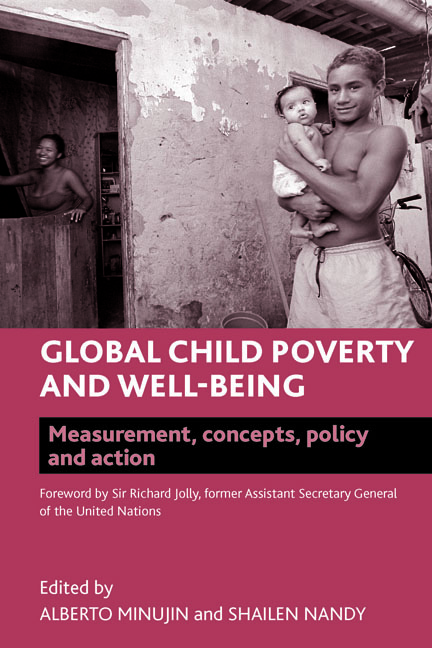twelve - A multidimensional profile of child poverty in Congo Brazzaville
Published online by Cambridge University Press: 07 September 2022
Summary
Introduction
The Republic of Congo is a central African oil exporting country with a population of 3.5 million inhabitants, of which 46% are children. Armed conflict in the 1990s caused a strong deterioration of social and economic living conditions − the Human Development Index plunged from 0.54 in 1985 to 0.45 in 1999 (UNDP, 2005). Since peace agreements in 2002, conditions have gradually improved, but the economy and government revenues of this lower middle-income country are heavily reliant on oil exports, and it is a net importer of goods including basic foodstuffs (IMF, 2007). Unemployment is high and one in every two Congolese lives in monetary poverty (Ministère du Plan, 2006). To determine pro-poor development strategies and priorities, Congo, like many other developing countries, started the process of formulating a Poverty Reduction Strategy Paper (PRSP). In addition to consolidating peace and promoting economic growth, the Congolese PRSP draft also specifies objectives such as improving access to basic social services (health and education) and improving the social environment such as water and sanitation, housing, employment and social protection (Comité National de Lutte contre la Pauvreté, 2008). In March 2008, a final draft of the PRSP was submitted to the World Bank and the International Monetary Fund (IMF), whose approval was also needed to obtain debt relief through the Heavily Indebted Poor Country initiative (HIPC).
Like any policy-making process, formulating a PRSP requires information about the economy, the population as well as government finances and services; a poverty analysis is a key component of such a situational analysis. In developing countries such poverty analyses are typically based on a traditional, monetary concept of poverty that is measured by comparing households’ expenses to an absolute poverty line using nationally representative survey data. However, poverty is inherently a multidimensional concept − sometimes even people with sufficient financial resources are unable to achieve satisfactory levels of well-being in other dimensions (Bourguignon and Chakravarty, 2003). This is particularly true for children, who comprise such a large part of developing countries’ populations, and whose well-being in dimensions such as education, nutrition and health also affects their future well-becoming as adults.
- Type
- Chapter
- Information
- Global Child Poverty and Well-BeingMeasurement, Concepts, Policy and Action, pp. 287 - 306Publisher: Bristol University PressPrint publication year: 2012



